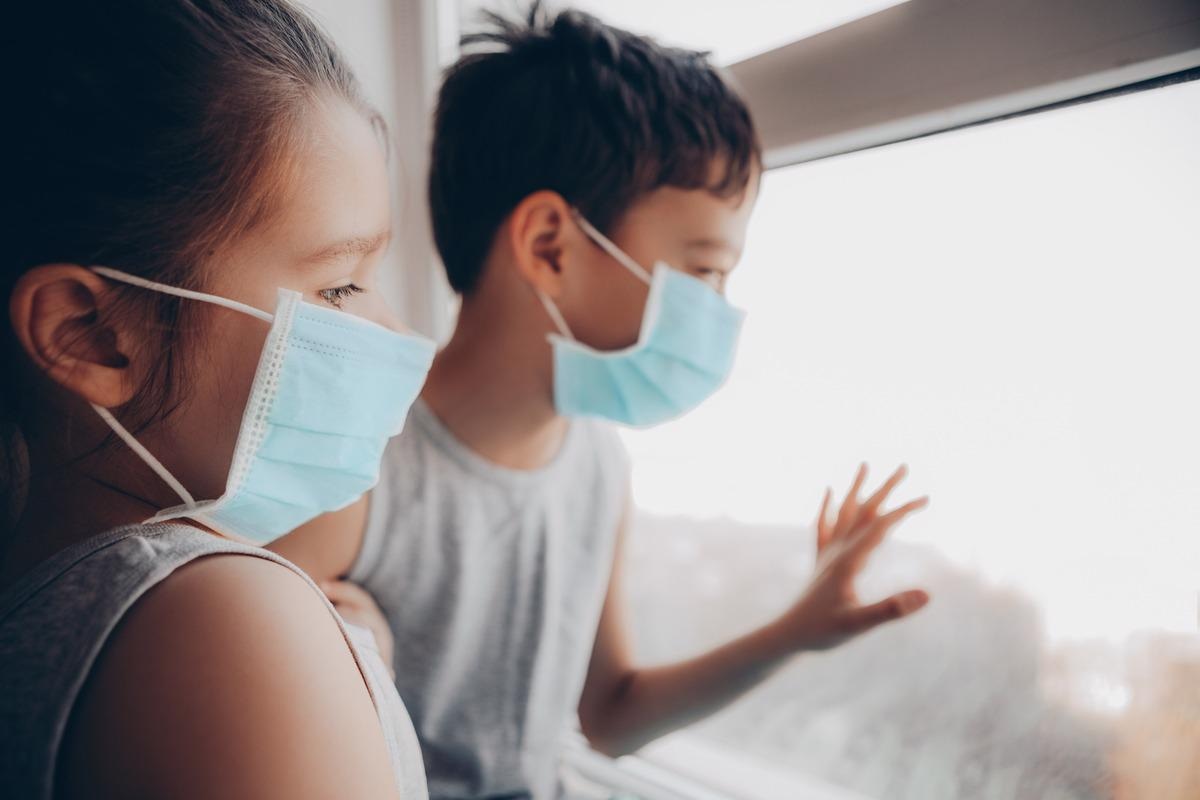Many studies have examined how the coronavirus disease 2019 (COVID-19) pandemic affected the lifestyle of children, but most were carried out during the first wave, early in 2020.
 Study: Lifestyle behaviours of children and adolescents during the first two waves of the COVID-19 pandemic in Switzerland and their relation to well-being: a population-based study. Image Credit: L Julia/Shutterstock
Study: Lifestyle behaviours of children and adolescents during the first two waves of the COVID-19 pandemic in Switzerland and their relation to well-being: a population-based study. Image Credit: L Julia/Shutterstock
A new preprint on the medRxiv* server describes changes in physical activity, screen time, and sleep duration up to January 2021 in Swiss children and adolescents, as well as how these correlated with well-being.
Background
Nearly all the earlier studies looked at how children’s lifestyles varied before and after the lockdowns that characterized the early pandemic period. Most ended by June 2020, and most looked at a single lifestyle feature. None were longitudinal extensions from pre-pandemic lifestyles.
However, it is indubitable that the pandemic and its lockdowns led to large shifts in the daily lives of both children and adults. In Switzerland, for the former, schools shifted into online mode, fully or partly, until August 2020. At that point, classes resumed in person, but with stringent mitigation measures in place.
Following a surge in infections in fall and early winter of 2020, classes continued but other facilities for leisure activity were closed to some extent, at least, until 2021. All these sharply reduced physical activity (PA) while pushing up screen time (ST) in the pediatric age group.
In fact, some studies from different regions and countries showed a tripling of the percentage of children who were sedentary, and a reduction in the proportion who had two or less hours of ST a day. Sleep disturbances also became more common.
Some studies showed that more PA led to better wellbeing, but more ST reduced it. The current study aimed to examine all three measures in combination, as well as their relationship to wellbeing in children.
What did the study show?
The researchers compared pandemic and pre-pandemic measures in these areas. They found that during the pandemic, the proportion of those who met the criteria for healthy PA and ST went down markedly during the period from March to May 2020, while more children met those for healthy sleep. During the second period, from October 2020 to January 2021, there was a partial recovery to healthy PA and ST, but it stopped before reaching pre-pandemic levels in children between 10-18 years.
Children aged 5-9 years continued to get less than enough PA but ST compliance improved to pre-pandemic levels during the second wave. Sleep continued to be problematic, despite small increases in compliance among older children (>10 years of age). Throughout the study, the lowest compliance in any area was seen among those aged 15-18 years.
Interestingly, though the direction of change was similar for both sexes, girls were always less likely to meet the recommended levels, at all ages and any time point, with, as before, the lowest compliance being in those between 15 and 18 years.
The researchers found that children who were getting enough PA, limited ST and adequate sleep had almost twice as high odds of enjoying wellbeing and excellent health compared to those who were lagging in all three areas, with approximately 60% higher odds of having high life satisfaction as well.
If any two were assessed in combination, the same trends were observable for both indicators. It is noteworthy that the association of the number of recommendations met by a child, and especially during the second wave, was strongly linked to wellbeing during the assessment period January to April 2021, compared to the same measures in the pre-pandemic period.
What are the implications?
The findings show that the pandemic has negatively affected children’s wellbeing, and lifestyle and that the two are closely associated. Despite the partial restoration of recommended patterns, a full recovery is yet to take place.
The researchers urge that policies restricting social interactions in order to limit disease transmission should be shaped while keeping in mind the effects of preventing infection as against promoting a healthy lifestyle. If such lifestyle changes become habitual during the crucial childhood and adolescent years, they may not be easily corrected thereafter, predisposing to chronic illness.
The important predictive value of lifestyle in wellbeing during this age also points to the need for public health policies to prioritize adequate PA, by providing for enough time and a proper environment, while restricting ST by ensuring appropriate alternatives.
Further,
public health policies to promote children’s and adolescents’ well-being should target PA, ST, and sleep simultaneously.”
This early study showing how compliance with ST, PA, and sleep parameters changed among children during the pandemic should drive future interventions to promote excellent health and wellbeing by communicating these findings, making available avenues for enjoyable PA, and alternatives to ST, while promoting sleep hygiene.
- Peralta, G. P. et al. (2021). Lifestyle Behaviours of Children and Adolescents During the First Two Waves of the COVID-19 Pandemic in Switzerland and Their Relation to Well-Being: A Population-Based Study. medRxiv preprint. doi: https://doi.org/10.1101/2021.11.29.21267019 https://www.medrxiv.org/content/10.1101/2021.11.29.21267019v1
Posted in: Medical Science News | Medical Research News | Medical Condition News | Disease/Infection News
Tags: Adolescents, Children, Chronic, Coronavirus, Coronavirus Disease COVID-19, Healthy Lifestyle, Hygiene, Pandemic, Physical Activity, Public Health, Sleep

Written by
Dr. Liji Thomas
Dr. Liji Thomas is an OB-GYN, who graduated from the Government Medical College, University of Calicut, Kerala, in 2001. Liji practiced as a full-time consultant in obstetrics/gynecology in a private hospital for a few years following her graduation. She has counseled hundreds of patients facing issues from pregnancy-related problems and infertility, and has been in charge of over 2,000 deliveries, striving always to achieve a normal delivery rather than operative.
Source: Read Full Article